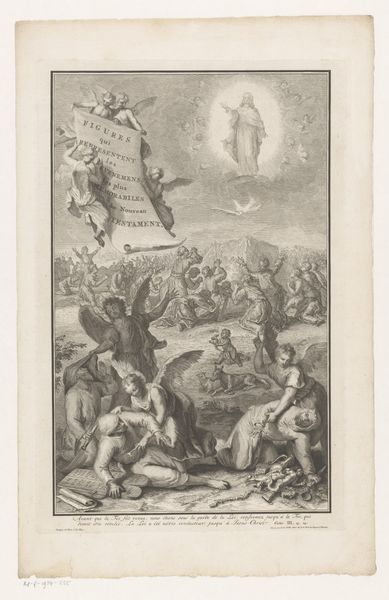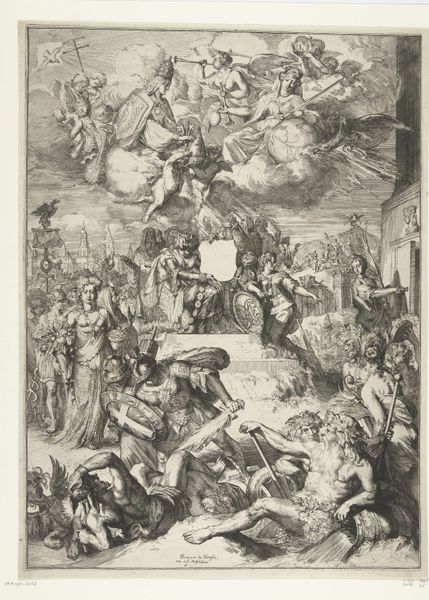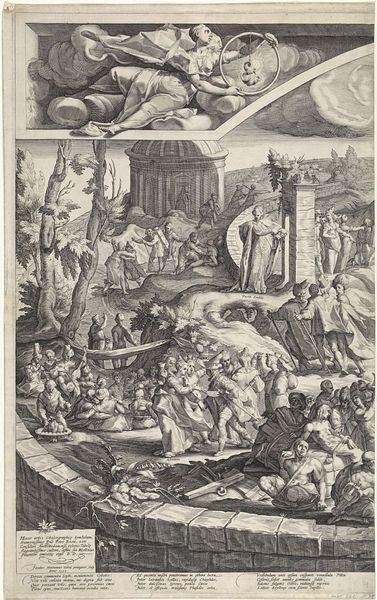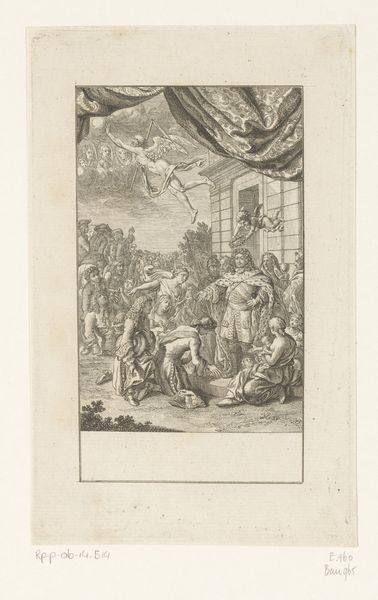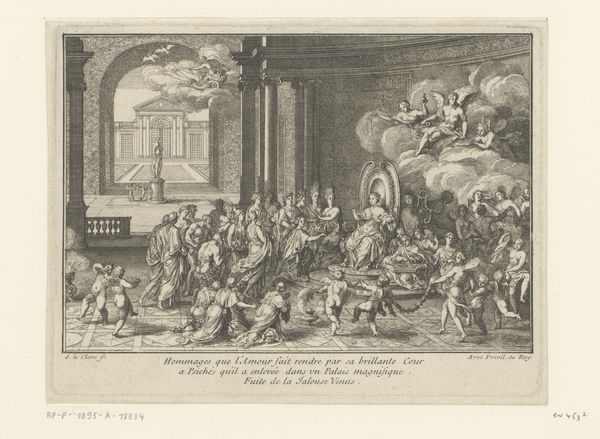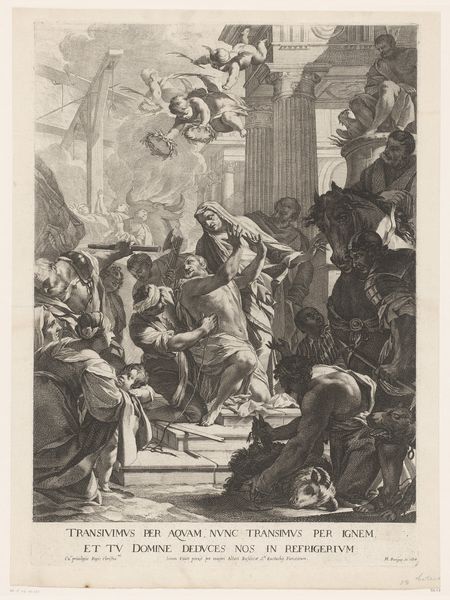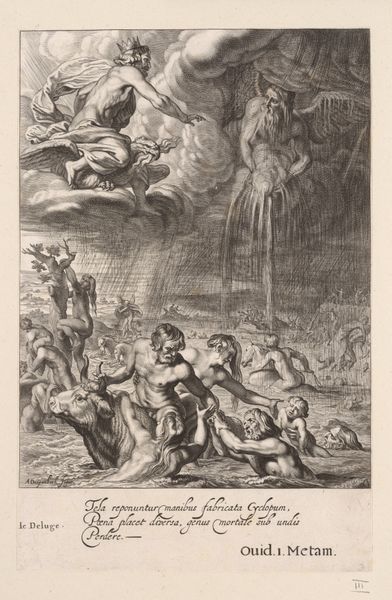
The massacre of the innocents set against a townscape 1680 - 1740
0:00
0:00
drawing, print, engraving
#
drawing
#
narrative-art
#
baroque
# print
#
figuration
#
history-painting
#
engraving
Dimensions: Sheet (Trimmed): 16 1/8 × 12 15/16 in. (40.9 × 32.9 cm)
Copyright: Public Domain
Curator: This print, titled "The Massacre of the Innocents set against a townscape," attributed to Lodovico Mattioli, depicts a scene of horrifying violence. It was created sometime between 1680 and 1740 using engraving. Editor: My initial reaction is the striking contrast. The chaos and brutal violence in the foreground is jarring against the orderly, almost staged, backdrop of the townscape. The figures seem to be spilling out from the walls of the town. Curator: The scene certainly embodies the baroque era’s dramatic sensibilities. The composition reflects broader narratives concerning the persecution of marginalized communities, the abuses of power within patriarchal societies and the violence and vulnerability that define their experiences. It pushes me to ponder historical traumas of state-sanctioned violence and its consequences. Editor: From a materialist perspective, it’s fascinating to consider the means of production. The artist uses engraving, a detailed and labor-intensive process, to depict the chaotic and often brutal work of armies, tools of oppression employed in mass killings of a particularly vulnerable segment of society. There’s something to be said for this intricate production of these disturbing and deeply moving events. Curator: The angelic figures in the clouds certainly juxtapose sharply with the carnage below. The positioning emphasizes not just a spiritual dimension, but also a visual hierarchy and power, particularly considering who the artwork would have likely been made for. Editor: Precisely. What were the socio-political messages encoded into the iconography, and for whom were those encoded messages specifically produced? Examining it also calls us to look at the labor of the person making the work, their intentions and lived experience as expressed in this work of engraving, as well as the hands that touched this very object over the centuries, each imbuing it with their own history and relationship to what it signifies. Curator: I concur; looking through the lens of social justice enables the extraction of deep insights, even through a print made so long ago, in order to ask critical questions of gender, social, and political narratives that shape contemporary understandings of mass violence. Editor: Absolutely, and I find that the attention to material detail brings us back to the real implications, both historically and in the present. That this exists, was printed, circulated, shows an active dialogue. It acts as a powerful artifact in its own right.
Comments
No comments
Be the first to comment and join the conversation on the ultimate creative platform.



